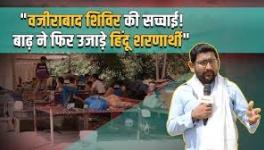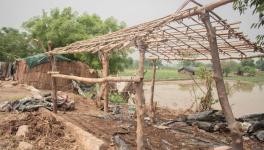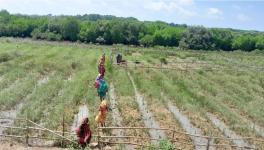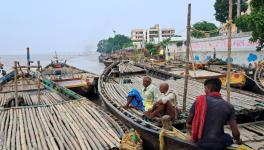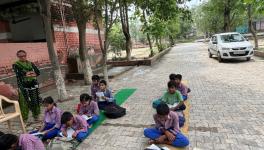Haryana Villagers Grapple with Online Applications to Access Flood Relief
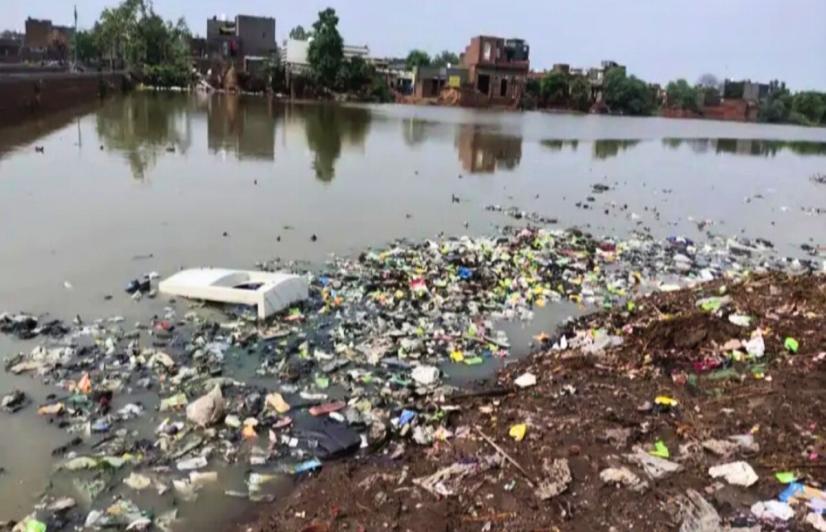
Kaithal: Hoping for a good harvest, Ramesh Kumar (45) of Bhatia village in Haryana sowed wheat and paddy on 10 acres of land by spending close to Rs 1 lakh. However, floods in River Ghaggar ruined the crops two months ago, leaving him in debt and without any alternative source of income.
"I lost my house and all other possessions to the flood. I am worried about my children's future and their education. I have no other income to take care of my family. Everything is gone,” he bemoans.
Kumar is among the hundreds of farmers who have suffered losses in the floods that washed away over four lakh acres of agricultural lands and destroyed close to 500 houses in 12 districts of the state, affecting over 1,500 villages.
“Yamunanagar, Karnal, Palwal, Kurukshetra, Panipat, Sonipat and Sirsa are among the affected districts, leaving farmers to grapple with losses exceeding Rs 55 crore,” said Puran Dahiya, a local farmer engaged in relief work with NGO Jansamvedna.
Residents in the Kaithal district, around 200 km from Delhi, were affected by the flooding of the Hansi-Butana canal. “The floods in this particular region were preventable but for the administration’s negligence,” said Vishpal Singh, a farmer from Sherpur village in Purab block. “Initially, the water levels were at 18 ft. It touched an alarming 28 ft on July 18. Had the canal been properly maintained, the villages on this side could have been saved," he said.
The farmers have been demanding a compensation of Rs 50,000 per acre for agricultural lands. However, the government has announced only Rs 15,000 per acre for full crop damage. The farmers have been seeking compensation for livestock loss, damaged borewells, Rs 10 lakh per family for the bereaved, a one-year waiver of all debts and interests and a Minimum Support Price (MSP) for their produce. However, none of these demands has been accepted so far.
Hiccups all the way
Launching an extended version of the e-KshatiPurti portal through the Meri Fasal Mera Byora website on August 2, Haryana Chief Minister Manohar Lal Khattar announced compensations of up to Rs 50 lakh for loss of movable property and Rs 25 lakh for immovable property. The money would be received in the bank accounts of farmers.
However, the complicated process of applying for compensation and lack of easy access to the Internet have been causing problems. The farmers had to register their details on the compensation portal or the Meri Fasal Mera Byora portal and submit proof of crop damage, including photographs, videos or revenue records, which many of the farmers were not adept at providing.
They are still awaiting the verification and approval of their applications by the concerned authorities, which may take a long time or be subject to corruption or negligence. They also face the possibility of receiving less than the promised amount or not receiving it at all due to various reasons, including lack of funds, bureaucratic hurdles or political interference.
As per the latest data from the government, 47 farmers from across the state have uploaded the necessary information, and 40 of them have received the compensation. When contacted, neither the bank staff nor the concerned government authorities were ready to speak on the issues related to delays in providing compensation and complications in applying for the same.
"The portal is very slow, and it crashes quite often. I had to upload many documents and proofs related to my land and crop damage. It took me several days to complete the application process. I have not received any confirmation or status update from the authorities yet. I do not know when I will get the money," said Rajesh Kumar (38) from Khambeda, who lost paddy, maize and vegetables cultivated on his six acres to the flooding.
Ramesh also had a similar experience. "I have not heard back from the authorities. I do not even know if I will get the compensation. But I will fight for what is mine, even if it means giving up my life," Ramesh said.
A local internet cafe owner at Cheeka in Kaithal district told 101Reporters on condition of anonymity that the farmers from several villages without electricity and internet access had frequented his cafe every day to fill up online forms for compensation. "I know they are in a dire situation, and it pains me to charge them Rs 50 per hour, but I too have to earn my living," he said, adding that he helped around 1,000 farmers to apply for compensation in a single month.
"The farmers told me that even in this situation, the government officials are seeking bribes from them to expedite their claims," the cafe owner said.
Waterborne diseases pose risk
The floodwater did not recede for several days, with the Ghaggar staying above the danger mark of 24 ft. However, after some time, the situation became better. However, as a 500-km road stretch was washed away, access to markets and basic services have been affected. The process of rebuilding it is going on at present.
In July, the district administration established 341 camps and provided water tankers to ensure clean drinking water to the locals. The medical team did health check-ups of over 6,000 individuals and distributed over 1,000 relief packages. However, such measures have been falling short as the number of affected people have increased since then.
A woman from Bhatia village told 101Reporters on condition of anonymity that her family have been living in a makeshift tent on a slightly elevated part of their land from the day floods submerged their house. "We have to walk for miles to get drinking water from a nearby village. The water in our taps is dirty and smells bad. We have no electricity, work and food. We have not received relief packages. The authorities have also failed to send water tankers," she said.
Locals have been falling sick as stagnant water breeds mosquitoes and gives rise to water-borne and vector-borne diseases. "For the last two days, my neighbour's son is suffering from high fever and vomiting. He might have cholera. We are scared to even go to the hospital because we do not know if they will treat us properly," said a resident of Khambeda village on condition of anonymity.
Officials at the local health centres said many people were falling sick with diarrhoea, fever, and skin and eye infections, but they could not give exact figures. According to a news report, Haryana recorded 772 dengue, 43 chikungunya and 35 malaria cases till August 23, with most of the cases coming from Rohtak, Yamunanagar, Rewari and Gurugram.
The health department is coordinating with the local administration to fog the areas to kill mosquitoes and is organising medical camps and distributing medicines and chlorine tablets to prevent the spread of diseases.
(Akansha Deshmukh is a Haryana-based freelance journalist and a member of 101Reporters, a pan-India network of grassroots reporters.)
Get the latest reports & analysis with people's perspective on Protests, movements & deep analytical videos, discussions of the current affairs in your Telegram app. Subscribe to NewsClick's Telegram channel & get Real-Time updates on stories, as they get published on our website.









